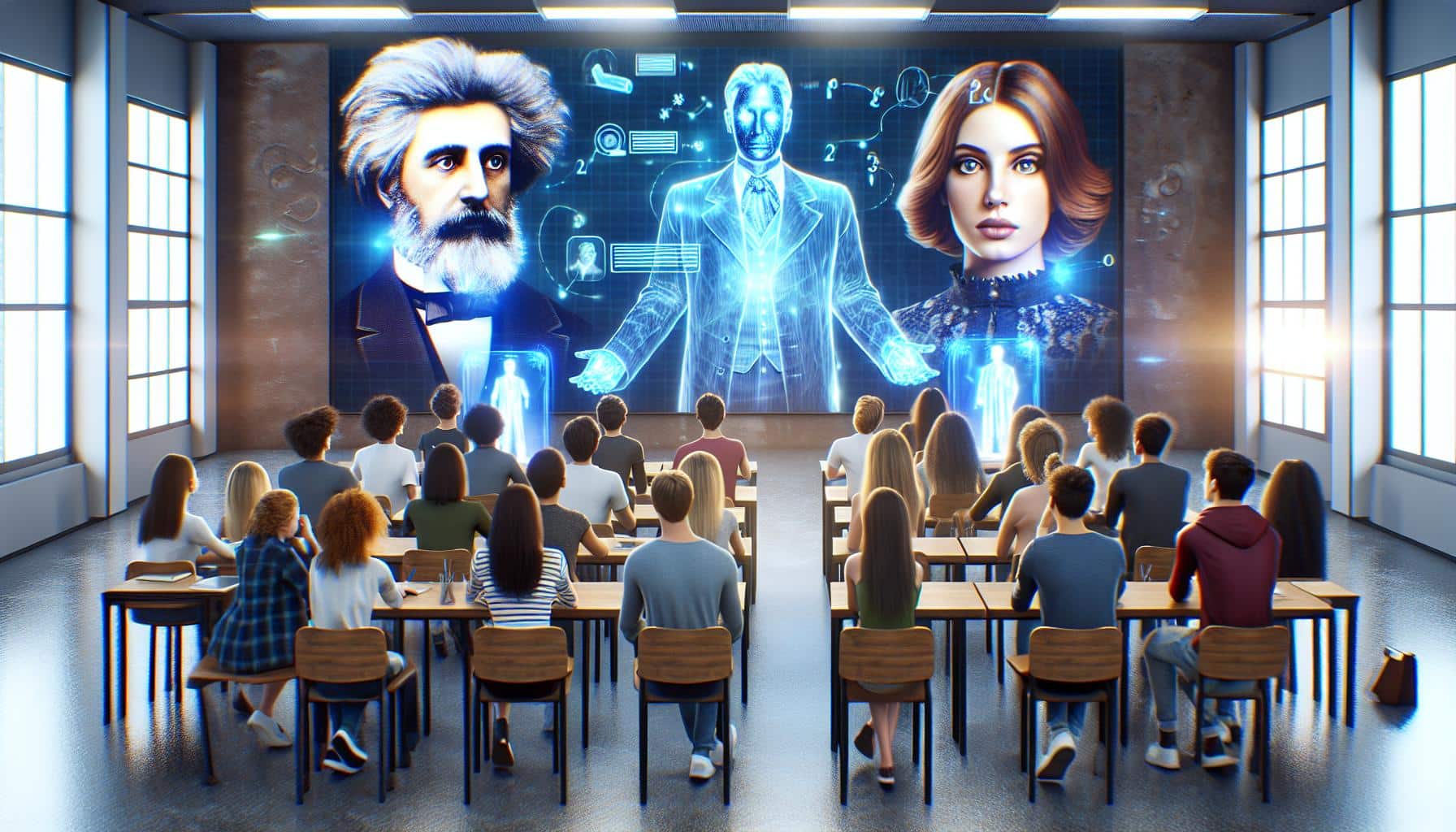Groundbreaking hologram technology brings long-dead pioneers to the classroom
The use of hologram technology is revolutionizing the education landscape, enabling college students to attend lectures given by historic figures such as Albert Einstein and Coco Chanel. Some universities have already started utilizing this cutting-edge technology to bring some of the world’s greatest innovators and artists, like Michael Jackson, directly into the classroom. The holographic technology can also project 3D images of speakers from all over the world, providing students with a dynamic and immersive learning experience.
The impact of hologram technology on education
Universities like Loughborough University in the United Kingdom have embraced this innovative technology to beam in scientists from prestigious institutions like the Massachusetts Institute of Technology (MIT). Students have shown great enthusiasm for these hologram guest speakers, as they offer a more engaging and interactive learning experience compared to traditional 2D presentations. Professors at Loughborough University have observed that the students prefer having a holographic guest speaker beaming into the classroom rather than a flat image on a wall.
How hologram technology works
Los Angeles-based company Proto has developed box-based holographic units that are at the forefront of this technological revolution. These units are currently used by major companies like BT and IBM to facilitate virtual corporate meetings and reduce the need for travel. Proto also collaborates with fashion retailer H&M in Sweden to create interactive product displays. The company’s founder, David Nussbaum, originally worked on creating holograms of deceased celebrities and now envisions using artificial intelligence to bring historical figures back to life. Proto’s technology allows for realistic projections of figures like Stephen Hawking, complete with authentic interactions, giving the impression that the person is truly present.
The future of hologram technology in education
Nussbaum believes that hologram technology should be accessible to the general public, not just limited to eccentric millionaires or celebrities. Within the next 18 months, Proto plans to release smaller and more affordable units priced at around $1,000 each. These smaller holographic units will make it possible to project realistic 3D images of notable figures, revolutionizing education and creating incredible opportunities for students worldwide.
Awe-inspiring experiences and sustainability goals
Experiencing hologram technology is truly awe-inspiring, according to Nussbaum. Loughborough University’s pro-vice-chancellor, Rachel Thomson, highlights the sustainability aspect of this technology, as it allows guest speakers to deliver lectures without the need for travel. By harnessing the power of hologram technology, universities can reduce their carbon footprint and work towards achieving their sustainability goals.
Embracing the potential of hologram technology
The integration of hologram technology into education holds the promise of revolutionizing traditional teaching methods. With the ability to bring history’s brightest minds and cultural icons back to life, hologram technology offers students a unique and immersive learning experience. As this technology becomes more accessible, it has the potential to transform education on a global scale and open up infinite possibilities for knowledge sharing and collaboration.
Analyst comment
Positive news: Groundbreaking hologram technology brings long-dead pioneers to the classroom.
Market analysis: The market for hologram technology in education is expected to grow rapidly as universities embrace this innovative technology. With the potential to revolutionize traditional teaching methods and provide students with an immersive learning experience, the demand for holographic units is likely to increase. Companies like Proto are already at the forefront of this technological revolution and are planning to release smaller and more affordable units, making hologram technology accessible to a wider audience. As this technology becomes more widely adopted, it has the potential to transform education on a global scale.













